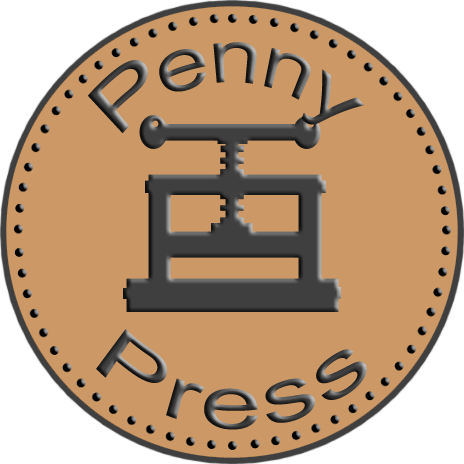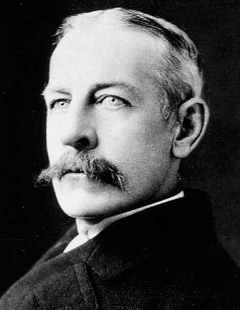REASON FOR PENNY PRESS’S SUCCESS
The heavy dependence on advertising as a major source
of revenue was a main reason that the Penny Press was able to sell papers for a
lower price than anyone else. Other papers relied heavily on subscriptions and
daily sales.
Newspapers rely heavily on advertising as a main
source of income and that is also a major reason that they are still being
offered at relatively low prices today.
POLITICAL FACTORS
Political and demographic changes were also
significant. Much of the success of the newspaper in the early United States
owed itself to the attitude of the Founding Fathers toward the press. Many of
them saw a free press as one of the most essential elements in maintaining the
liberty and social equality of citizens. Thomas Jefferson said he considered a free
press as even more important than the government itself: "Were it left to
me to decide whether we should have a government without newspapers, or
newspapers without a government, I should not hesitate any moment to prefer the
latter." It was because of his attitude that freedom of the press gained
mention in the First Amendment to the Constitution, and though early
politicians, including Jefferson, occasionally made attempts to rein in the
press, newspapers flourished in the new nation.
CHANGE IN ROLE OF JOURNALISTS
In the early 1800s, newspapers were largely for the
elite and took two forms – mercantile sheets that were intended for the
business community and contained ship schedules, wholesale product prices,
advertisements and some stale foreign news, and political newspapers that were
controlled by political parties or their editors as a means of sharing their
views with elite stakeholders. Journalists reported the party line and
editorialized in favour of party positions. The emergence of the penny
press greatly influenced communication technologies by covering news outside
those of government interests. The first penny paper, the Sun, was founded in
New York in September 1833.
After that time, newspapers became nonpartisan
since they were not supported by political parties. Penny papers hired
reporters and correspondents to seek out and write the news, while at the same
time, started to sound more journalistic than editorial. Reporters were
assigned to beats and were involved in the conduct of local interaction. The
penny press contributed to changes in newspaper content and structure. New
journalism practices resulted in the development of concepts such as news
reporting, emphasizing the importance of timeliness, and appealing to wider
audiences. These newspapers, though not completely uninfluenced by political
parties and their views, were self-funded and not party-funded. This allowed
them to shift allegiance on political issues that the papers dealt with quite
easily, which also aided in their success and acceptance by the general public.
IMPACTS
With these new publications, the lower classes were
newly introduced to the latest information unlike before.
The spark of the new penny presses began a new
revolution in the world of journalism. The whole content and structure began to
completely change, allowing new material to be released more quickly and
efficiently. Penny presses began to allow news to reach larger and wider
audiences, expanding publication size and influences.
The period between 1833 and 1860 is often referred to
by historians as a "spectacular phenomenon" for it revolutionized
American journalism. Since the mid-eighteenth century, the population in
America had been growing steadily. In 1833, there were 650 weeklies and 65
dailies in distribution, each with an average circulation of 1,200 (Martin,
1988). The advent of the "penny newspaper" (the colloquial name given
to newspapers sold at one penny when contemporary newspapers cost 6 cents) in
1833 was to transform not only the delivery and the content of the news, but
also those who for the first time had access to the news, which was no longer
limited to the mercantile and political elite. According to Emery and Emery
(1996), there are three factors which are essential to the successful
development of a newspaper: readership, delivery, and production improvements.
In the early nineteenth century, all of these factors played an important role
in the development of the newspaper. Consequently, as a new economic level of
the population was introduced to the newspaper, this came to have profound
effects on mass literacy and society.
SOCIO-ECONOMIC BACKGROUND
Changes began to appear in the workforce in terms of
service and technology, and functional and practical needs for literacy grew.
"Economic needs for reading and writing reached unprecedented levels"
(Graff, 1987, p. 261). Accordingly, the elite's fears toward educating the
masses began to subside, and it was slowly becoming accepted that they too
should be educated.
The early nineteenth century also saw an explosion of
print. Numerous religious groups, political parties, educational groups and
cultural promoters pervaded the market with print in search of sales and
influence (Graff, 1987). Technological advances in printing also paved the way
for the development and proliferation of the newspaper. The wooden,
hand-powered press which had remained unchanged since Gutenberg, was
transformed in this century. The printing press frame was converted from wood
to steel, the press became steam powered, and the print surface became a
cylindrical cast of letter punches. More innovations would follow, including
the switch from printing on discrete pieces of paper to printing on continuous
rolls (Carroll, n.d.). These developments were vital to the rise of newspaper
circulation in order to print larger quantities of papers and sell them at a
reduced cost.
A PRESS FOR THE MASSES
The penny papers flourished based on increased
circulation, but also due to a new importance being placed on advertising. Unlike
their predecessors, the penny papers did not rely on annual subscriptions or
subsidies from political parties. Advertising began targeting the working class
readership’s needs. While in the past newspapers did not print advertisements
they did not agree with, the penny papers relinquished their
"authority" on moral judgement, leaving this up to its readers.
"The cheap press had emphasized technological improvements and recognized
the importance of news as a device for advertising the paper as an advertising
medium" (Innis, 1951, p. 162). The penny papers made advertisement
available to more people, to an entire new economic class, thereby enlarging
the potential market for manufactured goods (Shudson, 1978).
The writing in the penny papers was yet another novel
concept that added a new dimension to journalism as we know it today.
Particularly in the beginning, the stories were sensationalist and were
selected to draw in the readers. Stories were often detailed and included
brutal accounts of murders and household disputes. Along with the
sensationalism, came an emphasis on local and human interest stories (Mott,
1978). The penny papers broke from the traditional newspapers of the time and
began reporting "interesting" stories regardless of their relevance.
When the penny newspapers did report on serious issues, they were often treated
with less "heaviness" than their 6 cents counterparts (Mott, 1978).
As it relied on sales and advertising, the penny press was free to publish
whatever stories it thought interesting or pertinent, but ultimately selection
was based on what would garner more advertisement revenues. Bennett was quoted
as saying that only the penny press could be considered a free press because it
was deferential only to its readers, but really it deferred a great deal to its
advertisers. Before the 1830s, newspapers were not even expected to be
objective, but rather to present a partisan viewpoint (Shudson, 1978). Mott
says of Bennett’s endeavour that it represented half sheer opportunism and half
humanitarian idealism(Mott, 1978, p. 232). Bennett tried to sell as many papers
as possible, and therefore adapted the stories for the less educated working
class, but he was also a democrat at heart, and applied the doctrine vox populi
vox dei (the voice of the people is the voice of god) to the running of his
paper (Mott, 1978).
THE IMPACT ON LITERACY AND SOCIETY
All this, then, resulted in the fact that the mass
public could now not only afford to buy the newspaper, but its needs were being
taken into consideration. Was the penny paper then instrumental in increasing
literacy levels, and/or did increased literacy levels of the early nineteenth
century make the penny newspaper possible and successful?
History shows that the penny papers were conducive in
expanding America’s newspaper readership. In his book, American Journalism,
Mott cites from the Public Leger, a penny newspaper in Philadelphia in 1936:
In the cities of New York and Brooklyn, containing a
population of 300,000 the daily circulation of the penny papers is not less
than 70,000. This is nearly sufficient to place a newspaper in the hands of
every man in the two cities, and even of every boy old enough to read (Mott,
1978, p. 241).
One out of three Americans were reading the newspaper
daily. America's literacy levels were already on the rise when the penny paper
was launched, however, the penny press played a key role in pushing literacy
levels higher, at an accelerated rate. Since the penny newspapers were simply
written, and affordable, they may have incited more people to read daily, thus
allowing them to improve their own literacy. It should be noted that as
literacy levels grew among the population, the quality of the writing in the
penny press also improved. Furthermore, when the penny newspaper brought the
news to the masses, it gave them "a new consciousness and new ideas".
The penny papers placed an importance on the voice of the common people, and
often published that people should be provided with a realistic view of
contemporary life; that abuses by authority (such as banks, churches, courts,
etc) should be exposed; and that the newspaper has a duty to give readers the
news and not to support a political party. The penny press was instrumental in
increasing literacy levels in a pragmatic society that was technologically
ready to move forward.
SUMMARY
History shows that American journalism was indeed
revolutionized during the nineteenth century, particularly with the
introduction of the penny newspaper. Shudson (1978) explains the evolution of
the newspaper in three sequential stages:
� the press is a monopoly controlled by the government;
� the press is controlled by political parties;
� the press finally breaks free from both government and politics by
enlisting the commercial profitability of advertising and appealing to a much
wider audience.
Several other factors played an important part in the
development of the newspaper in the nineteenth century: the country's growth in
population, the establishment of public education and increased literacy,
democratic forms of government, increased popular interest in public affairs,
and lastly the reduction of price (Mott, 1987). However, providing an
affordable and easy-to-read newspaper to the mass public can obviously be
attributed to the penny newspaper's legacy.
SOURCES
1)http://courses.educ.ubc.ca/etec540/Sep02/ResearchAssignment/LattucaM/full.htm
2) https://www.openschoolofjournalism.com/resources/encyclopedia/penny-press - OPEN SCHOOL OF JOURNALISM
3) https://www.dawn.com/news/801366 - DAWN
4) WIKIPEDIA
5) https://www.thoughtco.com/penny-press-definition-1773293 THOUGHTCo.
COMPILED BY:
SHRADDHA ACHARYA











